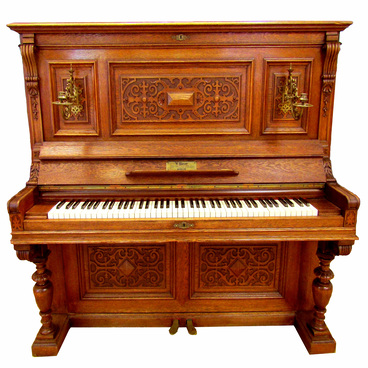This wooden frame full length mirror decorates the drawing room of Clodt’s mansion. It is located in the bow window — a protruded arc-forming glass part of the façade. This is the only exhibit that is known to have been left from the first owners of the house — merchant Ivan Clodt, his wife Ekaterina Evgenievna and their son Boris.
A mirror
Время создания
The late 19th century
Размер
360x84 cm
Техника
Cedar, basswood, plate glass, carving, woodwork
Выставка
1
Открыть в приложении#1
A mirror
#3
#8
The mansion, which became the Clodts’ residence, was built in Samara between 1897 and1898. Bay windows were an integral part of buildings of that time. They were supposed to be decorated with full length mirrors.
Carl and Ivan Clodt were brothers and merchants in the Second Guild. Carl Clodt was given the status of a Samara merchant in 1882. In 1887, he opened his own shop where he sold petroleum oil and axle grease. Later, when the business became profitable, Carl Clodt broadened the range of products with lubricants, spare parts and asphalt. The trade became so large-scale that Carl Clodt requested his brother Ivan to move to Samara. They became partners. Ivan Clodt moved house with his wife and son in 1892. When Carl had to leave on business, Ivan used to substitute for him in the shop.
#10
The Clodt brothers traded in modern European equipment, light fittings, components and spare parts, which significantly improved the life of citizens.
#11
The mirror with its carved top is over 3.5 meters tall — such products were the sign of the time and were considered a luxury. According to one of the versions, the bay window mirror may have been brought from a mansion in Venice. However, by the end of the 19th century lots of factories were opened in Europe to produce furniture and mirrors. Therefore the origin of the exhibit is impossible to determine exactly.
#4
The decorative pattern of the upper part of the mirror
#5
The base of the mirror’s frame was made of cedar. A solid basswood is attached to it and decorated with chiselled columns. In the 1900s, during restoration works, the frame was painted white. When the mirror was cleaned, it became clear that initially the craftsman put the walnut finish on the backside of the wood. The decorative pattern of the upper part is carved with a cedar wood carving tool.
#12
The quality of the mirror in the museum is very high: with the naked eye one can see six full reflections and a hint to a seventh one.
читать дальшескрыть
00:00
00:00
1x
A mirror
Время создания
The late 19th century
Размер
360x84 cm
Техника
Cedar, basswood, plate glass, carving, woodwork
Выставка
1
Открыть в приложении
Поделиться

